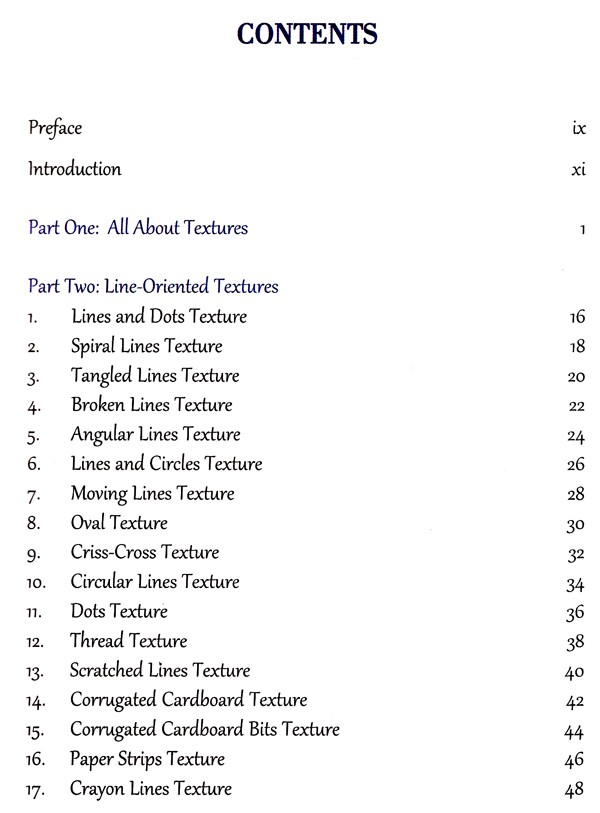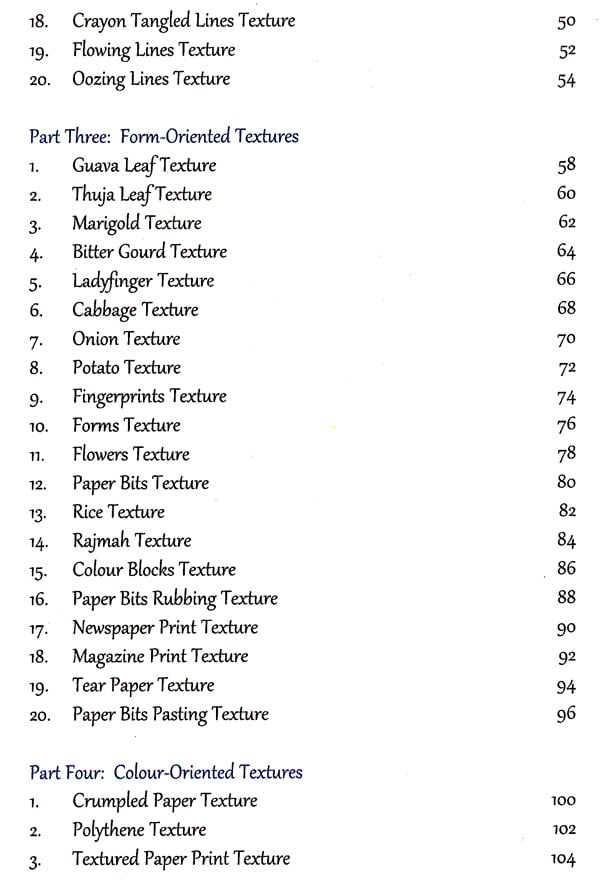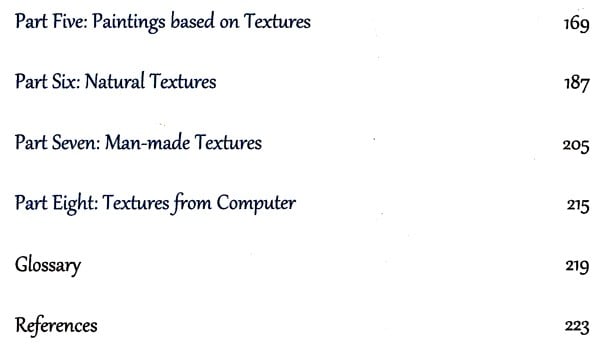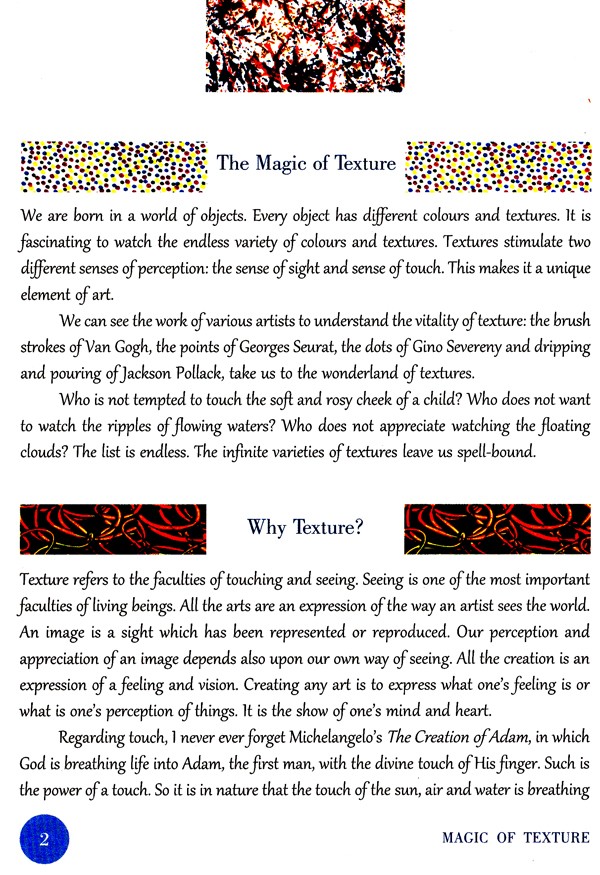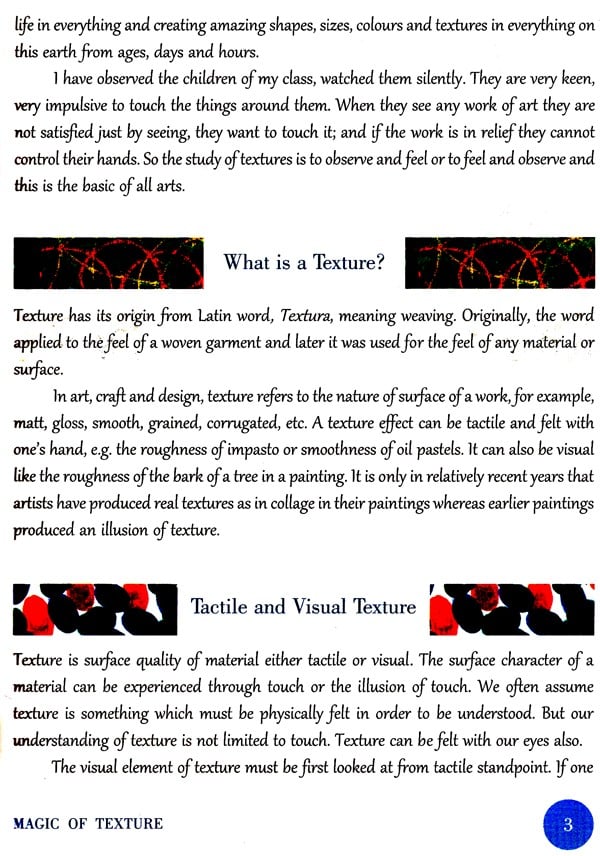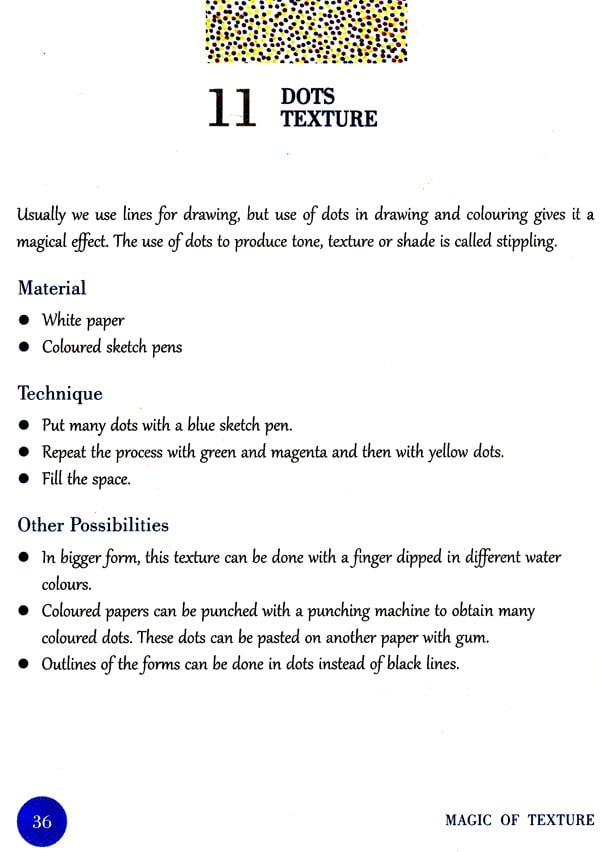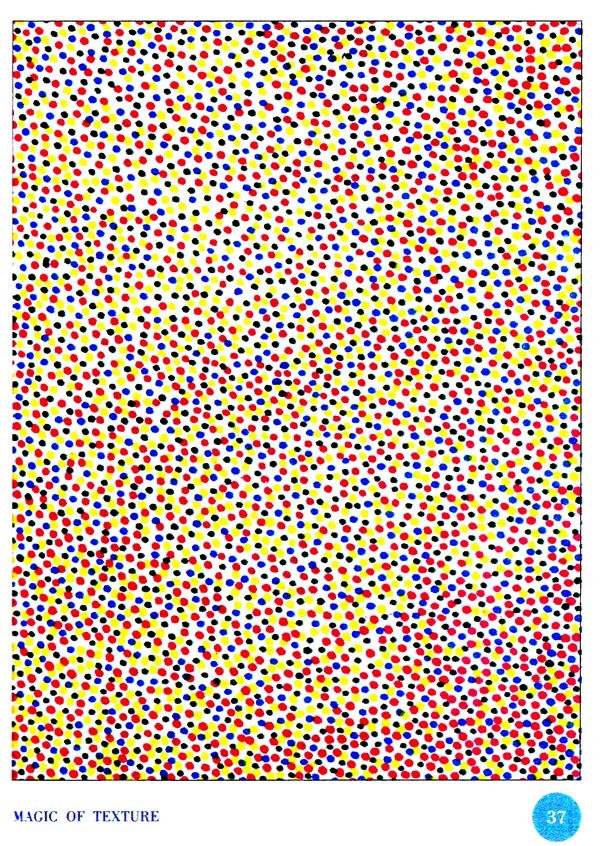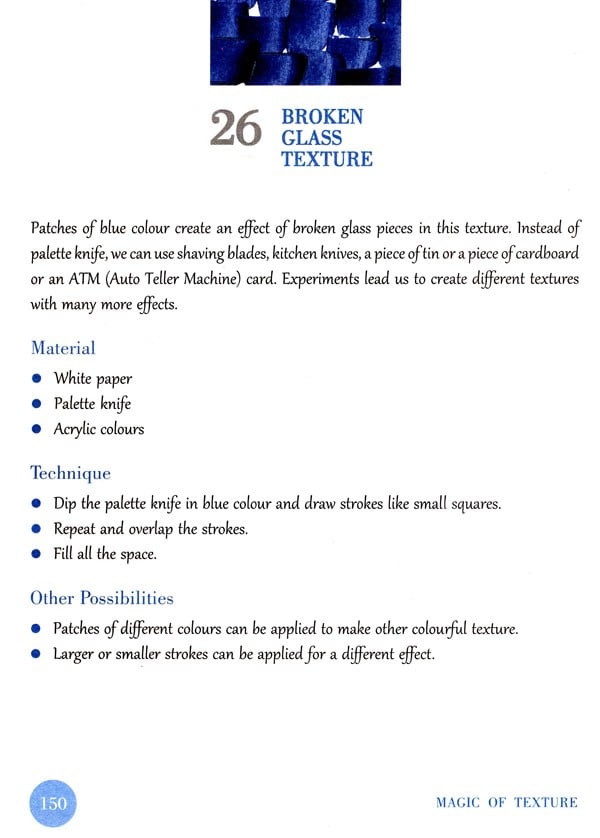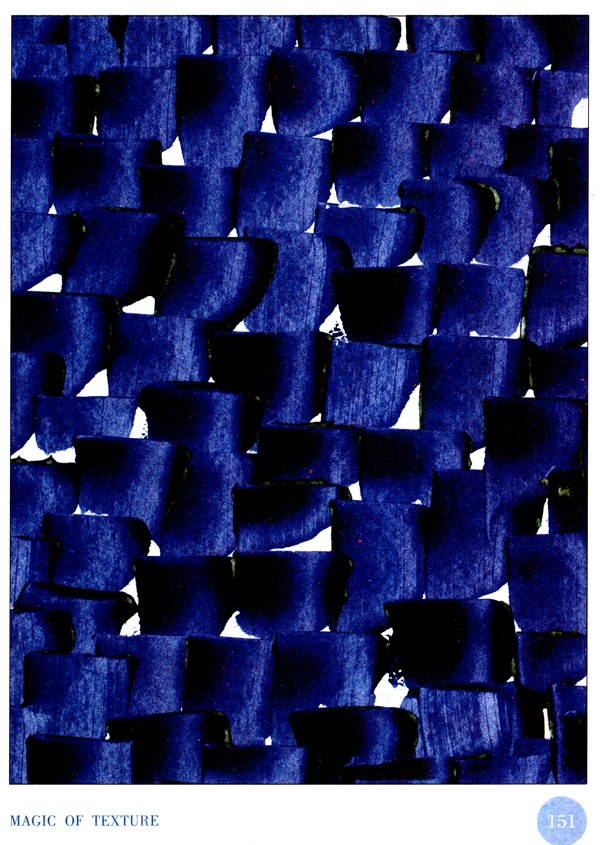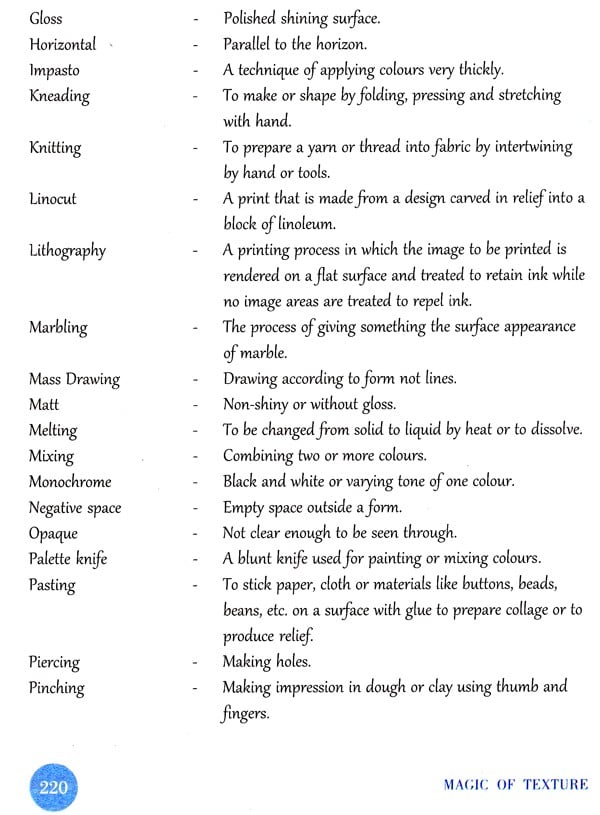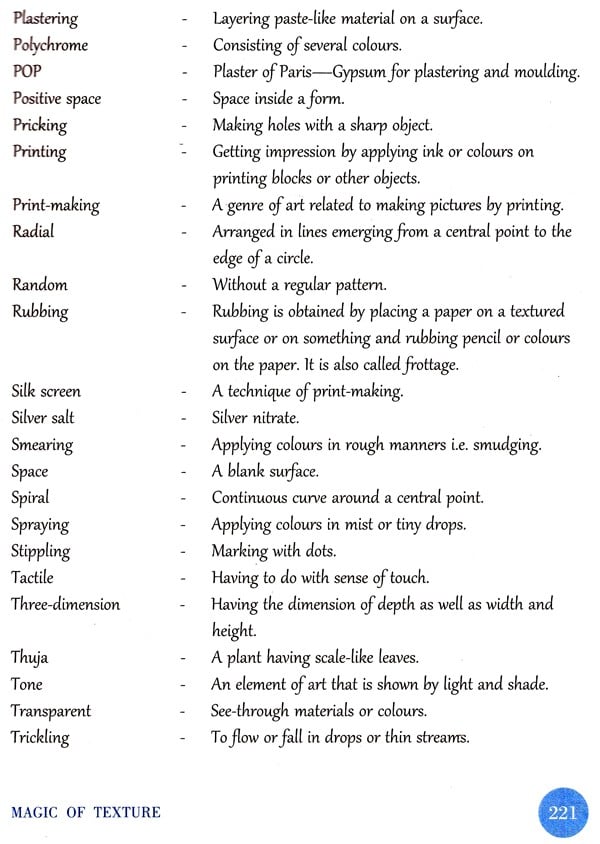
Magic of Texture
Book Specification
| Item Code: | UAC363 |
| Author: | Daisy Verma |
| Publisher: | National Book Trust, India |
| Language: | English |
| Edition: | 2015 |
| ISBN: | 9788123777405 |
| Pages: | 223 (Throughout Color Illustrations) |
| Cover: | PAPERBACK |
| Other Details | 9.50X7.50 inch Depth |
| Weight | 500 gm |
Book Description
As an art teacher, whenever I showed some piece of art to my students, they often asked me, "Madam, who has made it?" Whereas I always preferred them to enquire as to how the work was done. My interest in techniques led me towards writing this book. I could have called this book a book of techniques. But texture is nearer to our feelings than technique. It is an element of art but I find it integral to all creative expressions. Study of textures makes one more observant and attentive to the surroundings. 1 firmly believes that in order to create we first have to appreciate. Watching textures is to admire the beauty in each and every particle and creating textures is to submerge oneself into the sea of beauty. Textures have an infinite variety, so it is impossible to show all the textures in confined space of the book. Though most of the textures shown here are created textures, yet my efforts remain focused in creating an interest in creativity itself. I will be happy if my work is able to arouse curiosity in the readers so as to enable them to use these t tures in their work of art or to innovate more new textures.
Thanks are due to my daughter, Rini, and my husband, Ashok Kumar, for everything. To Mrs Sunita Vashisht, Principal, Jawahar Navodaya Vidyalaya, Kaithal (Haryana), for all the inspiration and cooperation.
To my students who have molded me into a conscientious person.
To all the writers whose books I have read and all the artists whose work I have seen and admired.
Apart from seeing and touching, 1 relate textures to feelings because feelings are abstract and so are textures. Further, 1 also relate them to skill because by practicing textures we learn many techniques and invent new ones. There are only two ways of learning textures: learning to see and to experiment constantly with tools and material. It is based on instinctive feelings for expression and can be rewarding as well as a pleasure.
1 have used acrylic colors, plastic crayon color water color cakes and poster colors in making most of the textures. The types and hues of colors can be changed. A texture created in acrylic colors can be created in water color cakes or poster colors. Instead of plastic crayon, colored wax crayons or oil pastels can be used. The result will be different. How much water should be mixed with water-based colors is a matter of learning by experience. A simple white drawing paper is used for the textures presented here, but ivory sheet or other types of papers can also be used for different results. Two or more textures can be combined in one work of art. Many textures can be used with stencils.
Artists have their own view of what surrounds them and what is within them. Their expressions are their contribution to the broad stream of art. This book is a presentation of my feelings and experiences. I hope that my work would be able to awaken a lively interest in readers to create textures, to understand and invent skills. For this we must explore every opportunity. We must take inspiration from nature and from our imagination. Problems may confront us but they are steps towards learning.
**Contents and Sample Pages**
